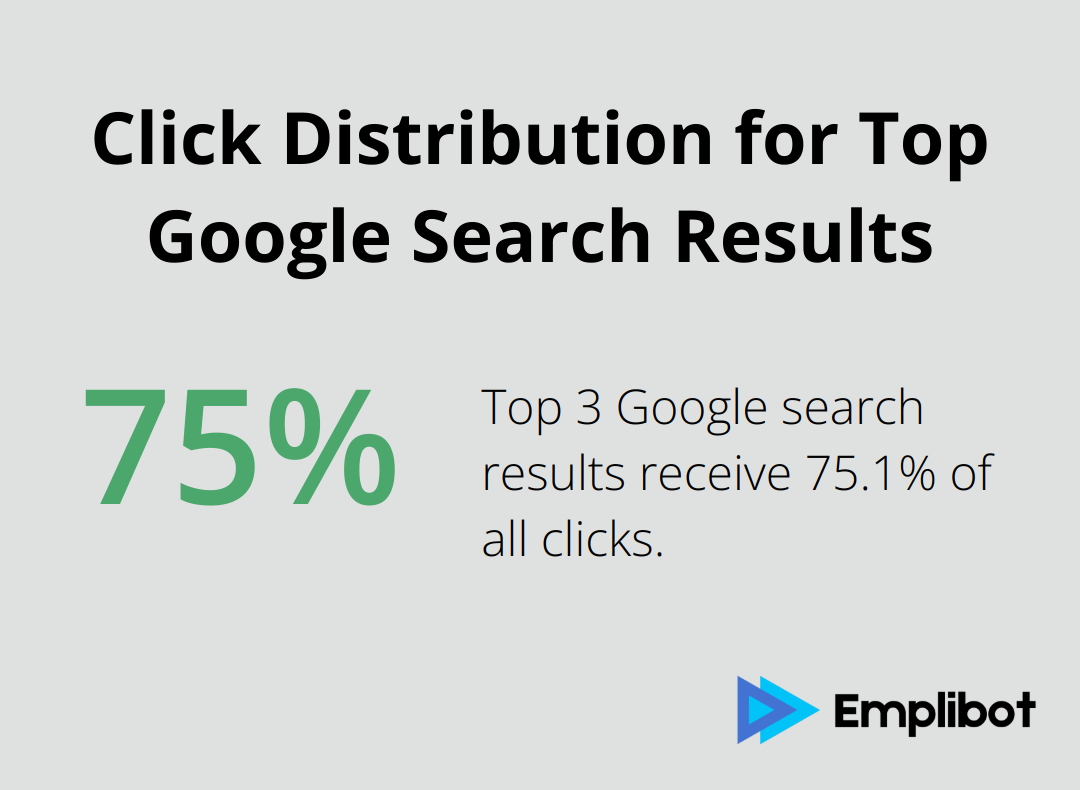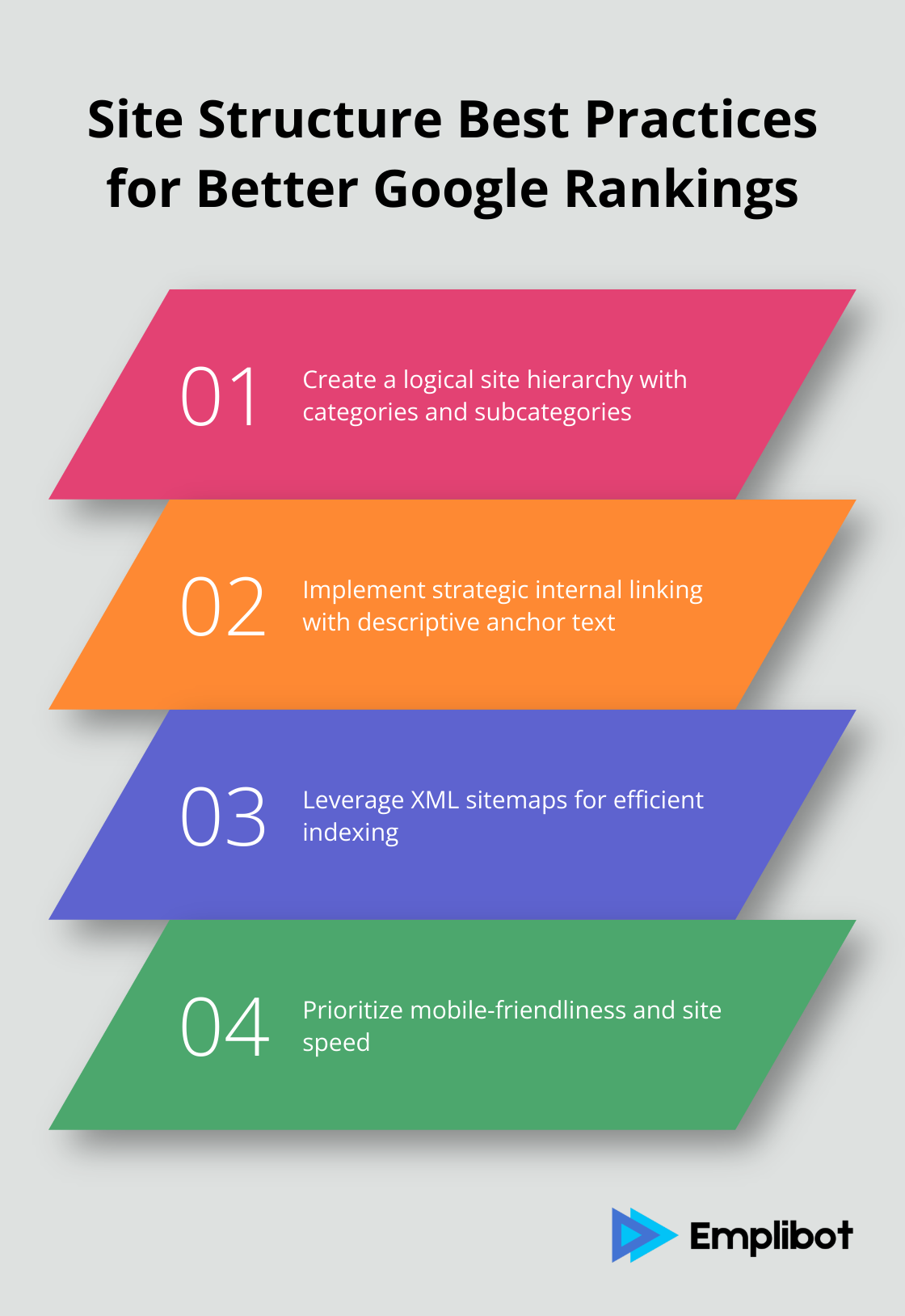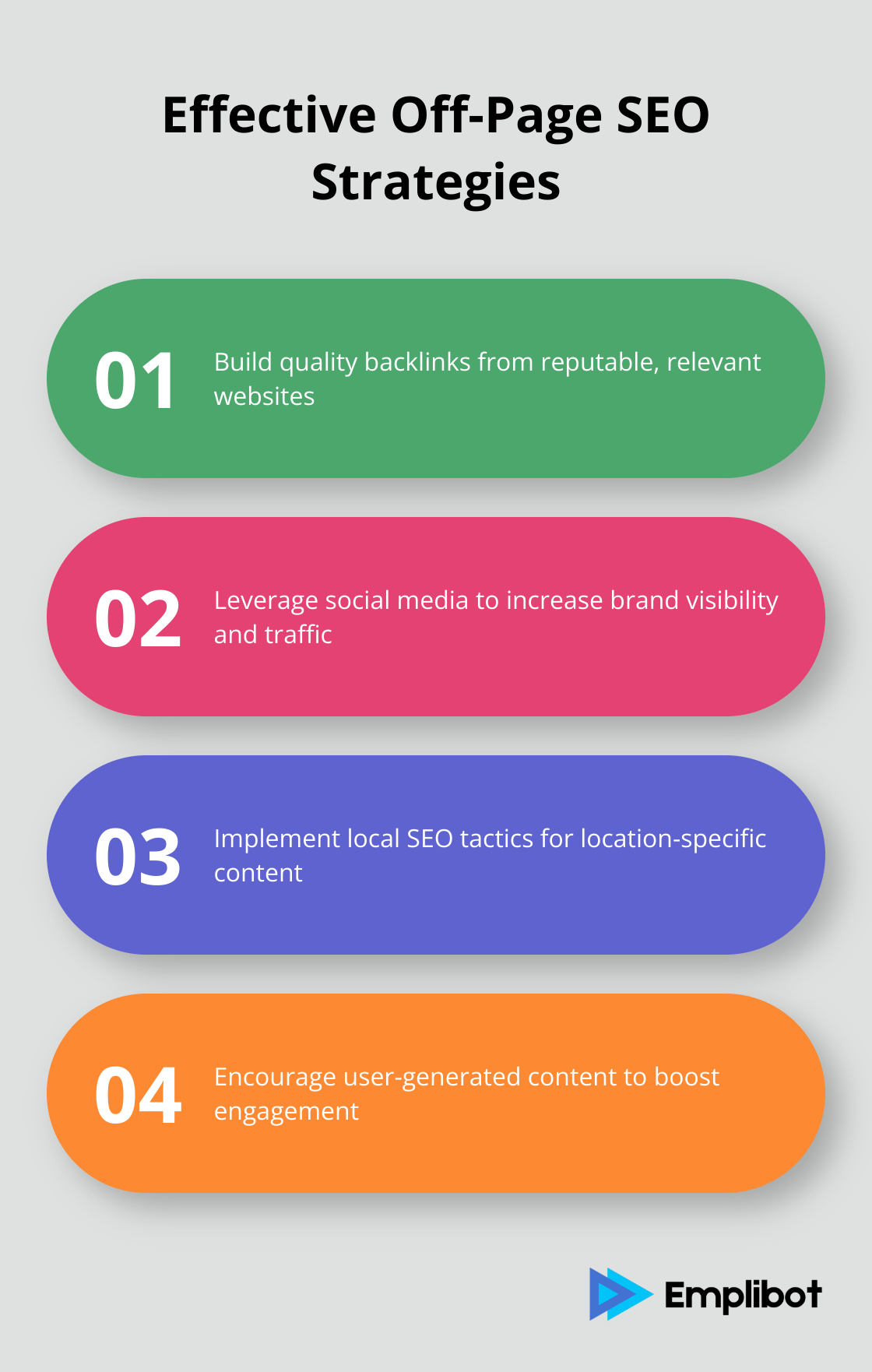Are you wondering, “Why isn’t my blog showing up on Google?” You’re not alone. Many bloggers struggle with visibility in search results.
At Emplibot, we understand the frustration of creating great content that doesn’t get the attention it deserves. This guide will show you practical steps to boost your blog’s Google rankings and attract more readers.
How to Optimize Your Blog for Search Engines
Search engine optimization (SEO) forms the foundation of getting your blog to show up on Google. Effective SEO can dramatically increase your blog’s visibility and drive more traffic to your site.
Focus on Keyword Research
Start by identifying the right keywords for your blog. Use tools like Google Keyword Planner or Ahrefs to find relevant, high-volume keywords with low competition. A study by Ahrefs reveals that the top 3 Google search results get 75.1% of all clicks. This fact underscores the importance of targeting the right keywords to climb those rankings.

Craft High-Quality Content
Google’s algorithms favor content that provides value to readers. Create in-depth, well-researched articles that answer your audience’s questions. A HubSpot study found that articles with 2,000+ words get more organic traffic, shares, and backlinks. However, quality always trumps quantity.
Optimize Your On-Page Elements
Pay attention to your title tags, meta descriptions, and header tags. These elements tell Google what your content is about. Include your target keyword in your title tag and within the first 100 words of your content. According to Moz, pages with a keyword in the title tag are 15% more likely to rank for that keyword.
Enhance Your Images
Images can significantly boost your SEO efforts. Use descriptive file names and alt text for all images. This practice not only helps visually impaired users but also gives Google more context about your content. A study by Backlinko found that using at least one image in a post correlates with higher Google rankings.
Monitor and Update Regularly
SEO requires ongoing effort. Regularly update your content, monitor your rankings, and adjust your strategy as needed. Try to keep your content fresh and relevant (Google loves updated content). With consistent effort and the right tools, your blog will climb Google’s search results.
As we move forward, let’s explore how to build a strong site structure that complements your SEO efforts and further improves your blog’s visibility on Google.
How to Build a Strong Site Structure
A strong site structure improves your blog’s visibility on Google. It helps search engines understand and index your content more effectively, which leads to better rankings.
Create a Logical Site Hierarchy
Organize your blog content into categories and subcategories that make sense for your readers. Reflect this hierarchy in your URL structure. For example, a cooking blog might use: www.yourblog.com/recipes/desserts/chocolate-cake. This structure helps users and search engines navigate your site easily.
A study by Ahrefs found that URLs closer to the homepage (in terms of clicks) tend to rank higher in Google. Try to keep your most important pages within three clicks from your homepage.
Implement Strategic Internal Linking
Internal linking guides users and search engines through your site. It distributes page authority and keeps visitors engaged. A Backlinko study revealed that pages with more internal links often rank higher than those with fewer internal links.
Use descriptive anchor text for your internal links. Instead of generic phrases like “click here,” use keywords that accurately describe the linked content. This practice helps search engines understand the context of your linked pages.
Leverage XML Sitemaps
XML sitemaps act as a roadmap for search engines, helping them discover and index your content more efficiently. A sitemap can make it easier for search engines to discover and index your pages.
Generate and submit your sitemap to Google Search Console. This step is particularly important for blogs with frequently updated content or those with many pages.

Prioritize Mobile-Friendliness and Speed
With mobile-first indexing, Google primarily uses the mobile version of your site for ranking and indexing. Ensure your blog provides a seamless experience across all devices.
Site speed is equally important. A study by Portent found that the first five seconds of page load time have the highest impact on conversion rates. Use tools like Google’s PageSpeed Insights to identify and fix speed issues on your site.
Building a strong site structure requires ongoing effort. Regular audits, content updates, and structure refinements will maintain and improve your Google rankings over time. Now, let’s explore how off-page SEO techniques can further boost your blog’s visibility and attract more readers.
Off-Page SEO Strategies That Work
Off-page SEO improves your blog’s visibility on Google. These techniques focus on actions outside of your website to boost search engine rankings. Let’s explore effective strategies that can significantly impact your blog’s performance.
Quality Backlinks: A Key to Success
Backlinks remain a top ranking factor for Google. A study by Backlinko found that the number one result in Google has an average of 3.8 times more backlinks than positions 2-10. However, quality trumps quantity. You should focus on earning links from reputable, relevant websites in your niche.
To build high-quality backlinks, create valuable, shareable content that naturally attracts links. Infographics, original research, and comprehensive guides are particularly effective. You can reach out to industry influencers and offer to guest post on their blogs. This not only earns you a backlink but also exposes your content to a new audience.
Social Media: An Indirect SEO Booster
While social media signals aren’t direct ranking factors, they indirectly influence SEO. A strong social media presence increases brand visibility, drives traffic to your blog, and creates opportunities for natural link building.
Choose platforms where your target audience is most active. Share your blog posts consistently, but don’t stop there. Engage with your followers, participate in relevant conversations, and share valuable content from others in your industry. This approach helps build a community around your brand and increases the likelihood of your content being shared and linked to.
Local SEO: Targeting Your Neighborhood
If your blog has a local component, local SEO can significantly boost your visibility. According to BrightLocal, 46% of all Google searches look for local information. Claim and optimize your Google My Business listing, ensure your NAP (Name, Address, Phone number) is consistent across all online directories, and encourage customer reviews.
Create location-specific content that addresses local issues or events. This strategy not only improves your local search rankings but also builds trust with your local audience.
User-Generated Content: Engaging Your Audience
User-generated content (UGC) can be a powerful tool for off-page SEO. Encourage your readers to leave comments, write reviews, or create content related to your blog. UGC not only provides fresh, relevant content but also signals to Google that your blog is active and engaging.
You can consider running contests or challenges that prompt users to create content around your brand or blog topics. This approach can increase engagement, generate backlinks, and improve your overall online presence.

Off-page SEO is an ongoing process. Consistent application of these strategies will gradually improve your blog’s authority and visibility on Google. As you implement these techniques, monitor your progress using tools like Google Analytics and Search Console (or Emplibot if you’re looking for an all-in-one solution) to refine your approach over time.
Final Thoughts
Getting your blog to show up on Google requires a multifaceted approach. You must optimize your content, build a strong site structure, and leverage off-page SEO techniques. These methods work together to improve your blog’s visibility and attract more readers.
SEO takes time and effort. You might ask, “Why isn’t my blog showing up on Google?” The answer often lies in the time and effort invested. Search engines need time to crawl, index, and rank your content (this process can take weeks or even months).
While manual SEO efforts are valuable, automated tools can significantly streamline the process. Emplibot offers a comprehensive solution for content creation and optimization. It handles keyword research, content creation, and distribution, which can help boost your online presence.

